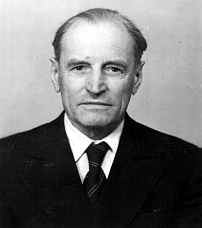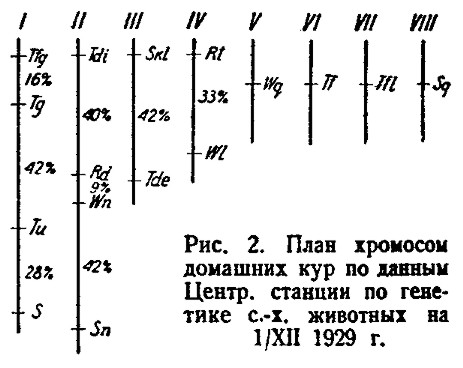|
|
Sergey Petrov
On 29 December 1999 the outstanding Russian poultry geneticist Professor Sergey G. Petrov died at the age of 96. He was acknowledged as a famous scholar in the field of poultry genetics as well as bee breeding.
Born on 18 December 1903, Sergey Petrov started his scientific career in the 1920s under the supervision of prominent Russian biologists and geneticists including Professors N.K. Koltsov and A.S. Serebrovsky. At that time he was a researcher in the Poultry Breeding Department headed by Serebrovsky at the Central Genetic Station (CGS), Anikovo/Nazaryevo/Slobodka led by Koltsov. The studies on chicken genetics and major mutations carried out by Serebrovsky, Petrov and other CGS researchers were the first to be done in Russia and contributed to the ‘gold fund’ of the Russian genetic science.
From 1928 to 1929 Petrov took part in a number of expeditions aimed at describing the local chicken populations in the North Ossetia and Volgo-Vyatka regions; these were organised by Serebrovsky and initiated the genogeographical studies in Russia. A number of reports from those expeditions are stored in the Russian Academy of Sciences Archive and have still to be reanalysed.
In the late 1920s and 1930s Petrov wrote a series of papers on chicken genetics, many of them in co-authorship with Serebrovsky. One of these articles (‘The Composition of the Plan of the Chromosomes of the Domestic FowI’, published in 1930 in the Journal of Experimental Biology Series A, Volume 6, Issue 2, pp. 61-72, in Russian) is considered one of the first attempts to summarise the available data on chicken linkage groups. It preceded by six years the paper by F. B. Hutt - a fact overlooked or underestimated by all past and contemporary chicken genome mappers. In this paper Serebrovsky and Petrov presented the first chicken map comprising four linkage groups with 12 genes and four other unlinked genes.
|
|
In the 1930s Petrov headed the Department of Genetics and Selection at the Poultry Research Institute in Zagorsk (now Sergiev Posad), Moscow Region. A book written by Petrov, Genetics for Poultry Breeders (1933, in Russian), became the basic textbook for poultry students for decades. The high point of Professor Petrov’s scientific career was his DSc thesis entitled ‘Origin and Evolution of the Domestic Fowl’ (1941, in Russian) which he prepared at the Institute of Genetics in Moscow (now the N.I. Vavilov Institute of General Genetics). This thorough treatise has hardly an equivalent in the world on the history of chicken domestication. It consists of three large volumes, one of them being an appendix containing many pictures, rare drawings and photographs concerning the origin and distribution of the domestic fowl.
Using
various historical
and archaeological evidence![]() , Petrov was the first to suggest the putative
emerging time for 15 morphological mutations in the chickens. According to his
doctoral thesis, the mutation of buttercup comb (D*C), for example, might have appeared in the l2th century AD, the
mutation of rose comb (R*R)
in the 1st century AD, the mutation of crest (CR*CR)
in the 2nd century AD, and so on. Professor Petrov’s major findings are
cited in R.D. Crawford’s Poultry
Breeding and Genetics (1990).
, Petrov was the first to suggest the putative
emerging time for 15 morphological mutations in the chickens. According to his
doctoral thesis, the mutation of buttercup comb (D*C), for example, might have appeared in the l2th century AD, the
mutation of rose comb (R*R)
in the 1st century AD, the mutation of crest (CR*CR)
in the 2nd century AD, and so on. Professor Petrov’s major findings are
cited in R.D. Crawford’s Poultry
Breeding and Genetics (1990).
From 1941 to 1944 Petrov served as a Senior Zootechnician to the USSR Agricultural Exhibition and Russian Federation Ministry of State Farms. Later (1944-1952) he was the Head of the Breeding Laboratory, USSR Institute of Poultry Industry. For many years Professor Petrov was actively involved in teaching and preparing scientific and pedagogical specialists by leading the appropriate departments at the USSR Ministry of Higher Education (1952-1956) and the USSR and Russian Federation Ministries of Agriculture (1956-1970). Before he retired in 1982 he served as a scientific adviser at the Timiryazev Agricultural Academy in Moscow.
Professor Sergey Petrov was a wise, kind, highly educated and intelligent person, a very interesting speaker and a respectful member of the Scientific Councils in a number of research institutes. Right up to the end he was distinguished by an honest and academic approach to science, and an inexhaustible interest in achievements in poultry breeding and genetics. He was an honourable member of the Russian Federation Branch of the WPSA.
The legacy left by Professor Petrov for future generations of scholars in the fields of chicken origin, evolution and genetics will be invaluable, and his name will always be associated with the history of poultry genetics and remain in our grateful memories.
Irina
Moiseyeva![]()
Michael Romanov![]()
Nikolai Pigaryev

